Resilience, self-care and what keeps you making art...
As part of our Mental Health for Artists season, we asked you to share what resilience means to you, your best self-care tips, and what keeps you making art in a challenging climate.

Letty McHugh - You Still Have The Sky, 2023, iPad drawing
The responses were raw, honest, and deeply personal, highlighting both the struggles and the small but powerful things artists do to keep going.
These are difficult and deeply personal topics, and we recognise that everyone’s experience is different. Here’s what you told us.
If you are struggling, please know that support is available (see resources at the end of this article).
=====
LARRY ACHIAMPONG
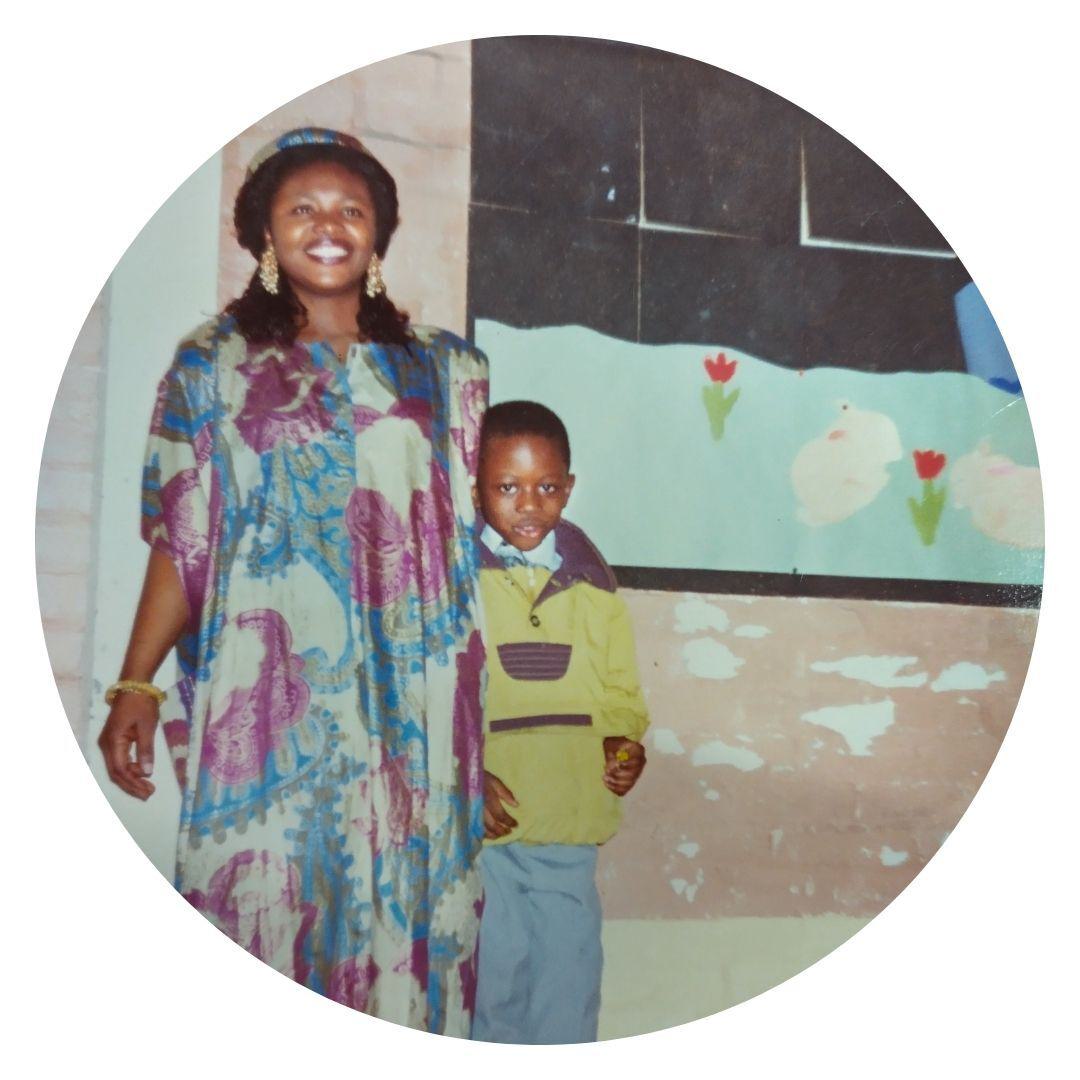
When I think about resilience my mum comes to mind; a person with so much heart and unwavering willpower; so many tears dropped, yet so much strength, push and ‘umph!’ in her affirmations and battle cries.
I know the parts of me that are resilient come from her, no doubt about it.
A lot of artists usually consider thinkers throughout history or other practitioners as their heroes, but for me? My mother is my hero.
I have witnessed the very essence of resilience through the way that my mother has led her story - it's one that emerges from deep within the immigrant experience.
Although we come from a rich cultural heritage my mum experienced great hardship, growing up without an education and was forced into servitude early on in her childhood. This upon the backdrop of constant strife, military coups and multiple civil unrests in the years that followed.
I regularly revisit these important stories because if I don’t they will be lost to the generations yet to come. A griot’s work is never done.
Although I experienced poverty and prejudice, albeit growing up in east London and Essex, I was surrounded during formative points in my childhood by an inestimable kind of spirit that my mother and aunties manifested within me. I believe that this same energy echoes within my work; whether in a gallery, on the street or behind the scenes ....this blood pumps into the beating heart of my studio practice and thus amongst other imperatives woven into the stories that I tell.
My mum in fact would tell me from the age of seven or so that
“You will tell our stories one day”.
My mother’s tongue forms prophecy and affirmation - but of course!...The heritage of the griot; of storytelling, and of seeing runs deep within my indigenous Akan heritage.
Larry Achiampong's projects employ film, still imagery, aural and visual archives, live performance, objects, sound and game design to explore ideas surrounding class, gender, cross-cultural and digital identity. His new book, 'If It Don't Exist, Build It' launched in February 2025 by Tate Publishing.
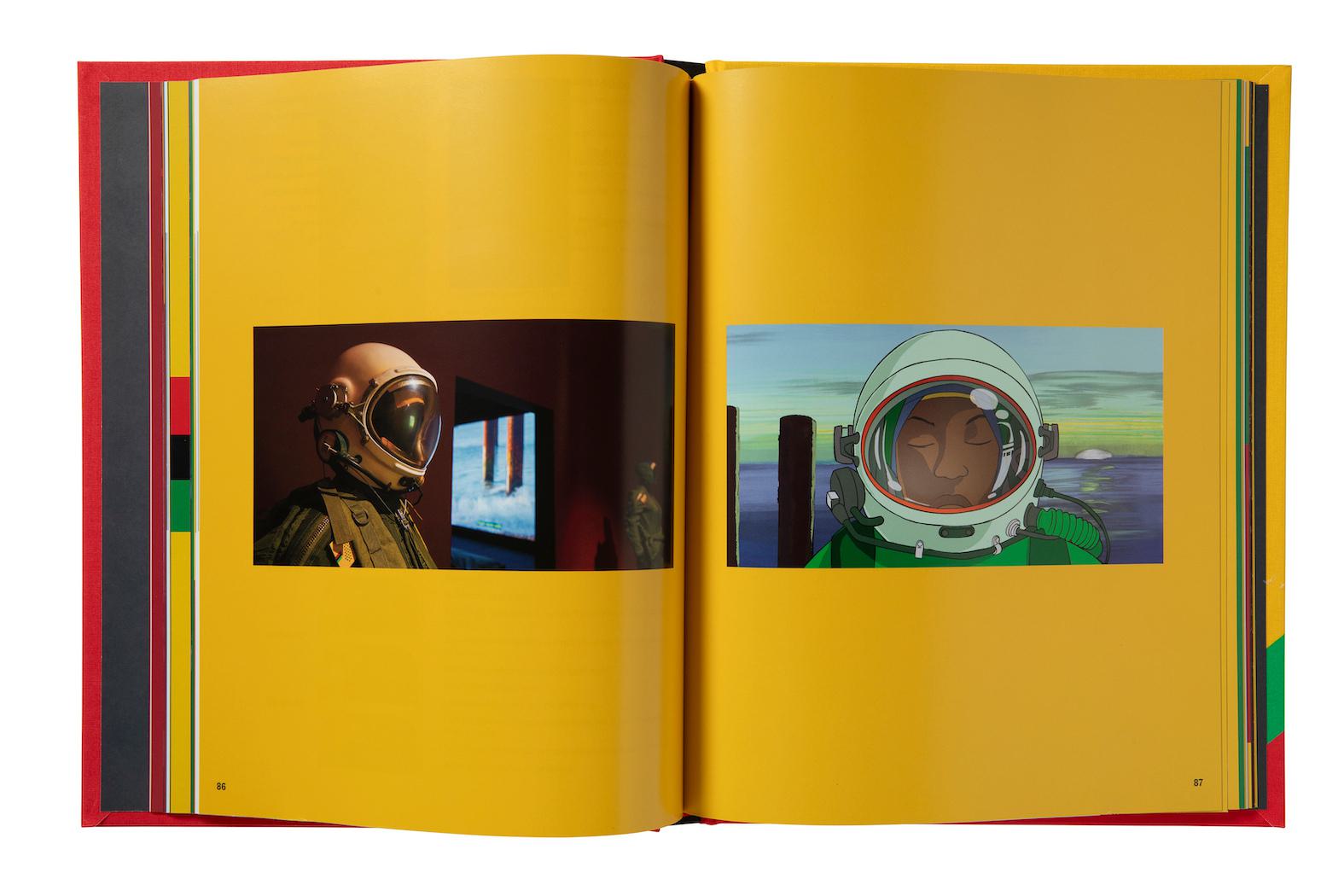
=====
LINKA LIPSKI
My relationship with my art is tumultuous because it directly expresses my relationship with myself, and when parts of you are too painful to look at, making art becomes painful to practice. So resilience is about showing up again and again, even if years go by in between. It's a commitment to the self.
Linka Lipski is an London-based artist "making the ugly beautiful" through explorations of anatomy, geometry, nature, disembodiment and symbolism.
=====
LETTY MCHUGH
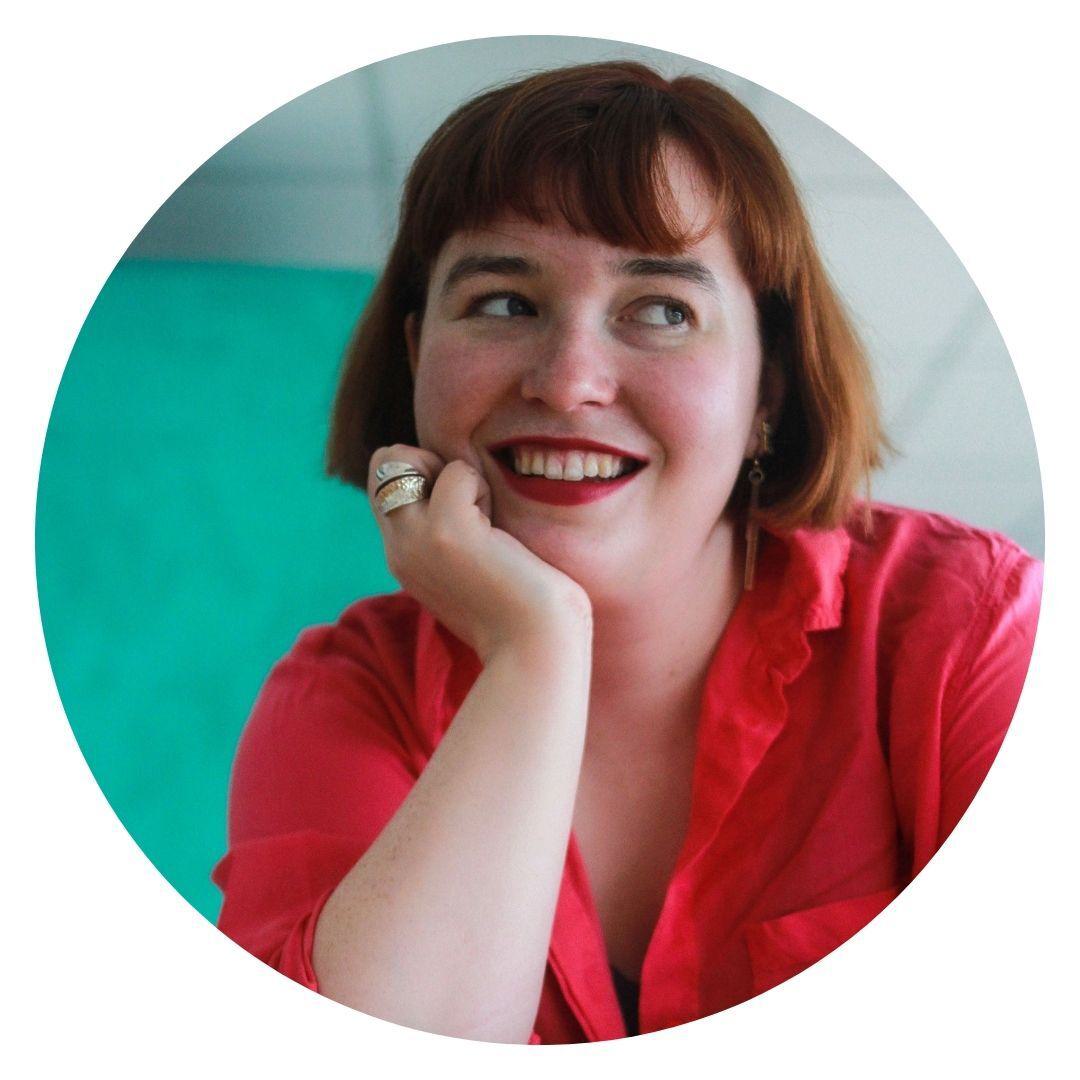
I started 2024 by smashing my phone screen. I then spent the first weeks of January sick in bed, interacting with the world through the cracks in the glass. Trying to think up good metaphors to make this mean something more than, ‘I am always dropping things.
Fortunately, I’ve been thinking about broken glass a lot recently.
In May of 2024 I paid a visit to Raby Castle and fell in love with some fragments of stained glass. I was there in my unofficial capacity as an ‘old things’ enthusiast. At the time of my visit, I was in a creative slump. It felt like every application I put in was getting rejected, and I was procrastinating the writing commission I did have in a big way. In 2023 I won a literary prize, and I thought it would make the day-to-day business of being a writer/artist easier, somehow.
In 2023 I had an MS relapse, with a new area of damage showing in my brain for the first time since 2016.
Secretly, I was convinced this damage had changed my brain, and I would never write again.
As I walked around Raby Castle, my internal monologue went like this:
‘This is the biggest oak tree I have ever seen in my life, it’s so beautiful here. My brain is broken, and I will never write again. I wonder what this kitchen smelt like when they were roasting meat here. My brain is broken, and I will never write again. I didn’t know wisteria grew this far north. My brain is broken, and I will never write again.’
On the second floor in one of the towers is a restored chapel, and the atmosphere in there is so powerfully peaceful I found a moment of quiet. There was something in the dust swirling in the light, and the thought that with a few extended breaks, people had been finding peace in this space for 100’s years. I fell in love with the glass. Colourful fragments with mismatched edges, carefully inserted into the clear windows.
The room guide explained that the chapel had been rediscovered and restored in the 1870’s. The stained-glass fragments in the windows are not original to the building, but they are still breathtakingly old.
Two pieces in particular (13th century roundels from Whitby Abbey) encapsulate everything good and bad about humans. Our desire to make sense of our place in the universe: our desire to communicate; to make something beautiful; to destroy it; to pick up something broken and save it like it’s precious; the desire to take the shards you saved and build something new.
And I thought, ‘I am going to go home and write an essay about this.’
When I got the prompts for this piece of writing they said, "What reminds you why you create? What does resilience mean to you?", I knew immediately I needed to write about the glass the glass at Raby Castle. I don't think there is a secret to resilience.
Sometimes, it’s just a question of picking up the pieces and holding onto them…until the time is right to make something new.
Letty McHugh is an artist and writer. Her work explores the universality of personal experience, which is to say, I’m interested in people, their stories, and the things that connect us all. In 2023, her self-published artist book Book of Hours, a collection of poetry, lyric essays, and images exploring her lived experience with chronic illness, won the Barbellion Prize for Literature and was featured on BBC Radio 4 Front Row.
=====
ARJUNAN MANUELPILLAI
I’m reminded to create by the hundreds of people I work with. They continue to reinvent my prompts, ignore my suggestions and freewheel into a place of creative joy.
Arjunan Manuelpillai is a published poet and creative facilitator passionate about making social change through the arts.
=====
HERFA THOMPSON
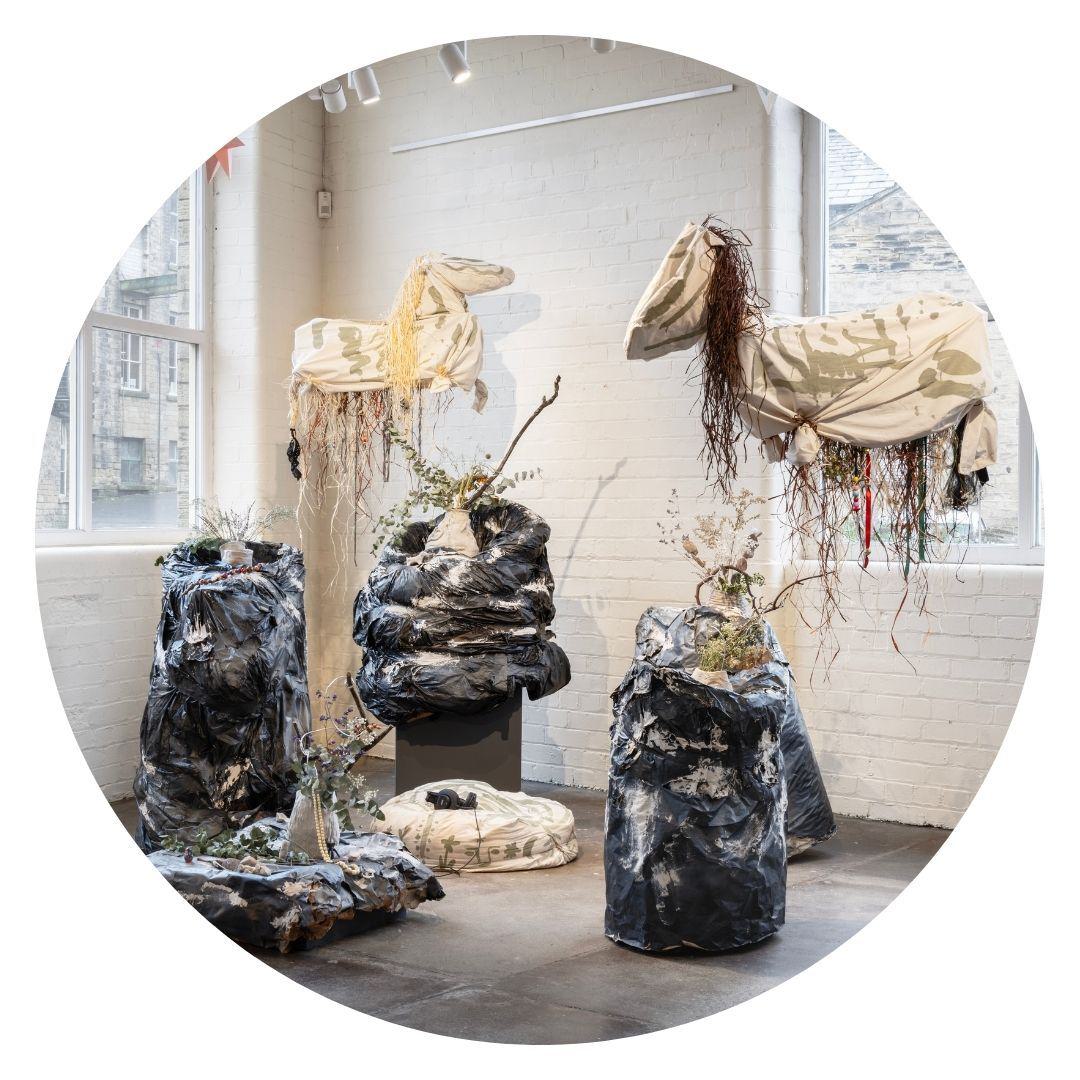
If I could go back and talk to the 20-year-old person, arriving in Glasgow and struggling to correctly pronounce the name of the street she needed to go to, I would have given her a big hug and told her that she will be okay, but boy oh boy she will need to learn how to be resilient—but in her own way.
Resilience—the act of rebounding—is often seen as something that needs to be done with urgency and immediacy, especially in the world of architecture school (which is where I started at art school). Had a bad crit? Come on get over it, you’ll be fine. On to the next one. For some, this works. However, for myself and probably many other artists, this just doesn’t do it.
At Glasgow School of Art, the careers service made you take a Myers-Briggs personality test if you went to see them. I came out with INFP—something a lot of students at the university seemed to have, according to my careers advisor. Though often discredited, I am not surprised many artists coincidentally have had this result.
I for Introverted, N for Intuitive, F for Feeling and P for Prospecting – INFPS are often described as 'idealists or 'mediators' and traits attributed to them tend to be creative, highly empathetic and driven by high values. As great as these traits are, we have seen how this can easily lead to burnout in an art world that moves at an alarming high pace. Thus, resilience to me, cannot just be the rebounding, the springing back. Resilience is the everyday nurture of oneself and community.
Now when I say 'nurture', it’s easy to think of the capitalistic way of looking at self-care. In nurture I mean allowing artists to have space to enjoy all facets of human emotions. Many artists have chronic health issues, mental health issues and or are minorities in a world that is increasingly hostile. Artists need space to be human, to be ill, to play and to laugh together. More importantly they need time. I was very scared for my surgery because I thought I would never be able to practice art again. Imagine if I could have been reassured that this isn’t the case, that there’s always room at the table. Imagine.
I found my own way of being resilient over the years which is separating art from my life more. Letting life inspire my art but not letting my art become my life. It’s very easy to pedestalise art and our practices but in the end it’s lovely job and we are just mere humans. Finding hobbies was a game changer, even if that’s gardening or reading. Just doing something where I’m just Herfa not HERFA MARTINA THOMPSON GSA ALUMNI XOXO.
I love making because I finally love life. I love stories, I love materials and dreaming. However what good would I be if I’m too tired to dream or even worse, dead and can’t dream?
Herfa Thompson is an artist currently living in Leeds. Her practice looks at storytelling of black bodies and with them, explores themes of mythology, water, love, biology and space, both in terms of the cosmos and spaces that humans occupy.
=====
PALOMA DE ALMEIDA DURANTE
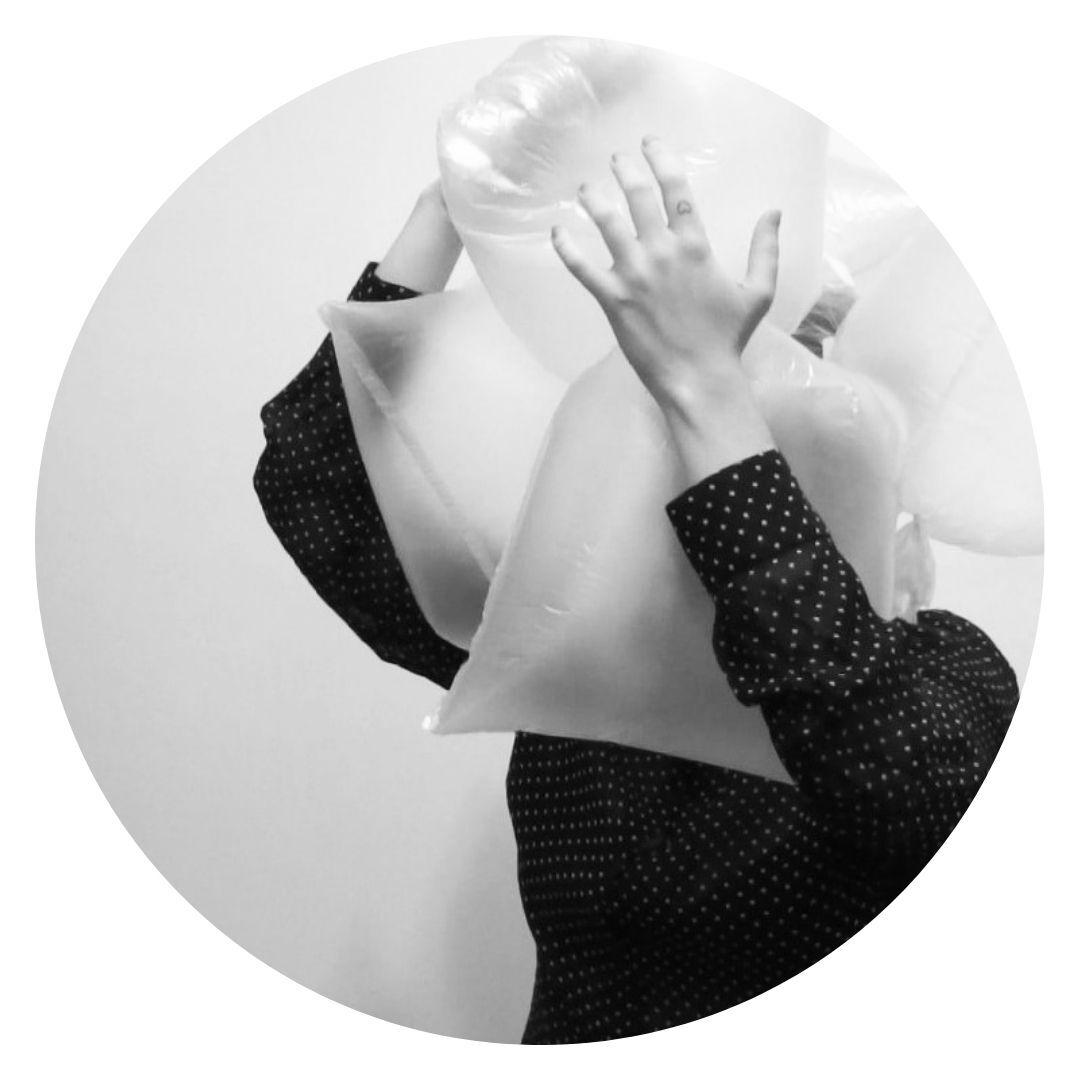
One of my favourite mythological characters is Sisyphus. Despite his tragic fate, there is something in his task that, to me, resembles the artistic practice.
I understand the creative process as the act of rolling the marble ball up a mountain, fully aware that it will never trully reach the summit. This is what drives me start over and over again: in one way, and then in another way. And then I fail. And restart. Always driven by a question that remains unresolved, by a perspective yet not explored, or by something that I previously overlooked.
In this cycle, I disagree with myself, estrange myself, and split apart. I blur the line between the accuracy and the mistake, fascinated by the unexpected, recognizing that the material I work with is a partner with its own time and will. There is a constant dialogue: it demands as much from as I demand from it. This dynamic, with its pains and pleasures, is what drives me to keep creating.
If it weren´t like this, maybe I would have chosen another profession, something within the “efficiency” field. But when I feel guilty for putting so much effort into what might seem like “nothing”, I remind myself that this apparent failure in artistic practice is, in fact, a way of being. In a world that constantly demands a machine-like efficiency - precise and uncritical - art reconnects us with the time of experience: the time for the decantation of affects and emotions, so essential to the elaboration of meanings, but increasingly coopted by production dynamics and alienating devices.
I like it when the Portuguese poet Matilde Campilho says, “art doesn´t save the world, but it saves the minute.” Any ambition greater than that is just vanity. I keep rolling my marble ball up the mountain because, at some point during this incessant movement, something always emerges. Subtle events, unexpected, arising from the strange alchemy that happens among the artist, the artwork and the audience. Fatigue, an inevitable feeling, is part of the movement. When it comes, I fall silent. It is during these moments that I usually stop to look at the view, carefully embracing my marble ball. Nothing is more important for someone working with creative process than the constant maintenance of a curious state, what requires a less self-absorbed approach to things – being less concern with “my pain” and more interested in the experience of “pain”, for example. This create points of contact, sharing, and resolutions.
And finally, whenever possible, watch with some amusement the moment when, in a poorly calculated pirouette, the marble ball slips out of sight and rolls downhill. Again and again.
Paloma de Almeida Durante (Brazil, 1992) is a visual artist, educator, and editor. Her research encompasses the intrinsic relationship between word, image, and gesture to explore subjects such as otherness, memory and fragility.
=====
JULIE WARD
I began to hate the word 'resilience' when it was co-opted by the (Conservative) government during the 'Age of Austerity' in the context of how we, as part of the Big Society, needed to bounce back from funding cuts, loss of services and loss of employment, often by being expected to give our professional services for free. The term actually originated in materials science where it is used describe the amount of stress a material can take before breaking. Many of us are broken. It is ok to acknowledge that. It is real. Why should we be resilient? If it's just so that more and more organisations can exploit us I refuse to play the resilience game!
Julie Ward is a cultural activist based in the north east of England. From 2014 to 2020 she was an MEP and served on the European Parliament’s Culture & Education Committee.
=====
THOMAS GRIFFITHS
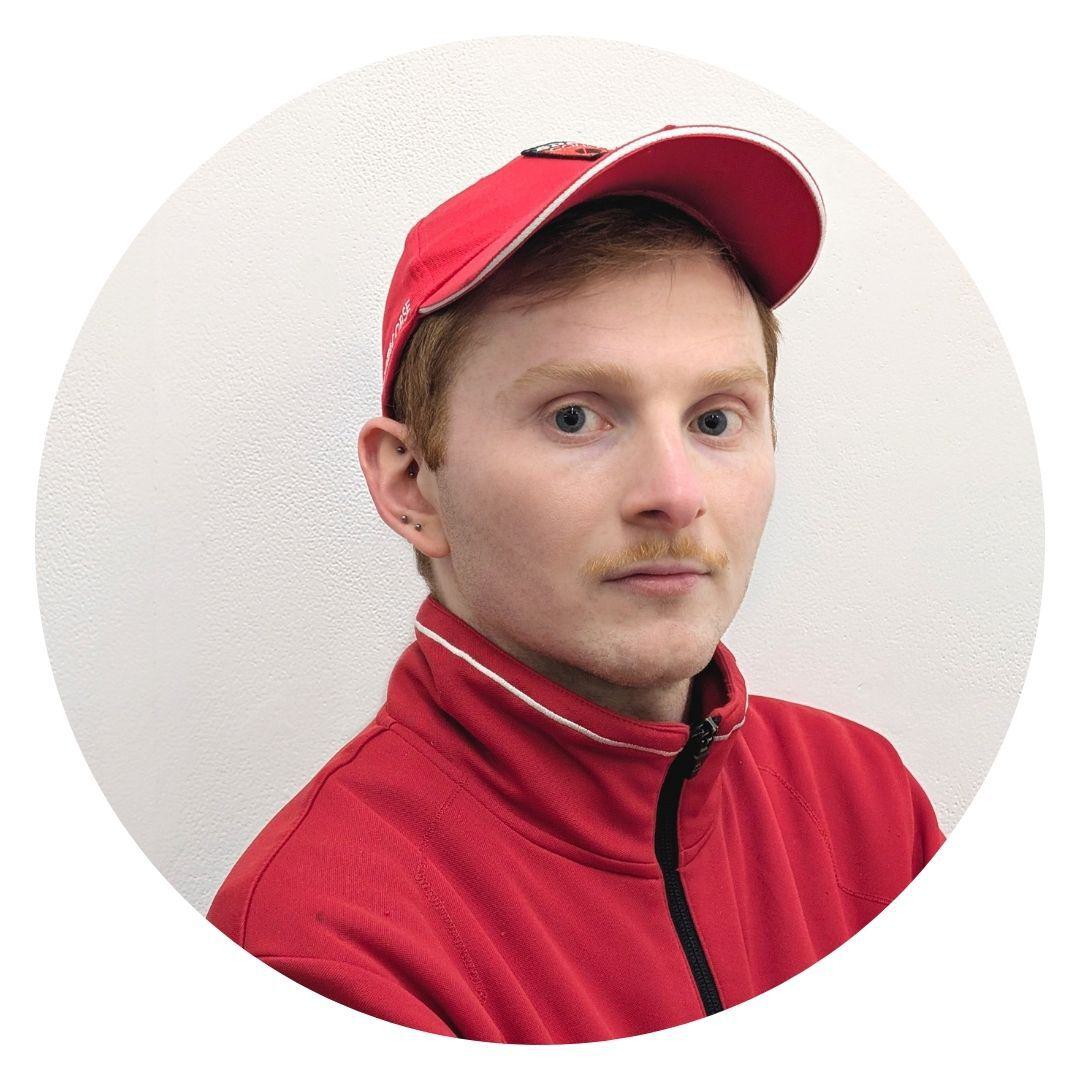
Navigating an arts career can be like traversing a terrain with crevices and peaks, although everyone has their own landscape to tread—some smoother or rougher than others.
The correct equipment can help, but you need the mental capacity and energy to manage the pressure and momentum, just to keep up. At times you can falter and it can get too much. You bounce back, reevaluate, and overcome this; some may say this is 'growth' but is it just struggling to stay afloat, with no choice but to sink or swim? This may take time, from days to years, but you keep going… despite the setbacks beyond your control.
I think resilience comes from a place of necessity, continuously hardening your exterior as you journey on. You can better handle the rejections, the idea of giving up and comparing yourself to others. At times you can feel isolated, but there are networks around you and communities to welcome you in, giving the much-needed support to spur you on. Although, sometimes you probably just need a moment to ground yourself for self preservation.
The burnout is real!
I am learning that taking a step back from time to time is crucial, as you can get sucked into the momentum by taking on more and more –stop-- have that break, it is likely long overdue. Luckily, the Christmas period gives a good excuse as things come to a bit of a standstill, mostly. I recently gave myself permission to switch off from everything. I know this is a luxury. I temporarily said goodbye to Whatsapp, emails and rushing around from here to there. I immersed myself in fictional worlds, escaping into fantasy and sci-fi RPGs, but now it’s proving difficult to get back to reality. We are not NPCs after all (pull the plug).
My 'self-care' escapism is also a source of inspiration, sparking the want to create again, as I explore otherworlds that glisten with possibility of change as the story unfolds; relating to my transformative practice, as it shifts and meanders. The reason I create is because my perception changes and I am evolving, so my work follows. I contrast glossy, surreal aesthetics of untouched virtual spaces against the mundane sights and glimmers of what it means to be in real life. I aim to create from a new perspective, transforming the rough underbelly into an alluring façade. Grafting alternate outcomes together, forging what does not exist from what does. Despite the origins deriving from darker places and lived experience, which (un)intentionally incorporates my queerness and socio-economic background. I want it to embody depth, pulling from various strands that dig beneath the surface, not playing into expectations. I see my artwork as an invitation, seducing the viewer to desire it.
Thomas Griffiths is a Sheffield based artist and curator, and a recent MFA graduate of Manchester School of Art.
Influenced by industrial artefacts and public/hidden spaces, their practice reimagines and reinscribes commonplace objects and symbols with unexpected interpretations.
=====
MARK TAMER
Put quite simply, resilience is my ability to keep going and to keep making art. We all have our challenges, Mine is a chronic illness that limits a lot of what I’d like to achieve. I want to be in my studio 5 days a week, I want to be working or taking residencies in different parts of the world, I want to be out networking and promoting myself and my work - okay, maybe not that last one so much. But the reality is that I can’t do any of that. I need to work within my limitations. And that can be difficult and frustrating. It has taken me a lot of years to reach a place where I’m comfortable with what I can and can’t do. And even to embrace those limitations.
Mark Tamer is an experimental photographer interested in imperfection, chance and fragility.
=====
SALLY LEMSFORD
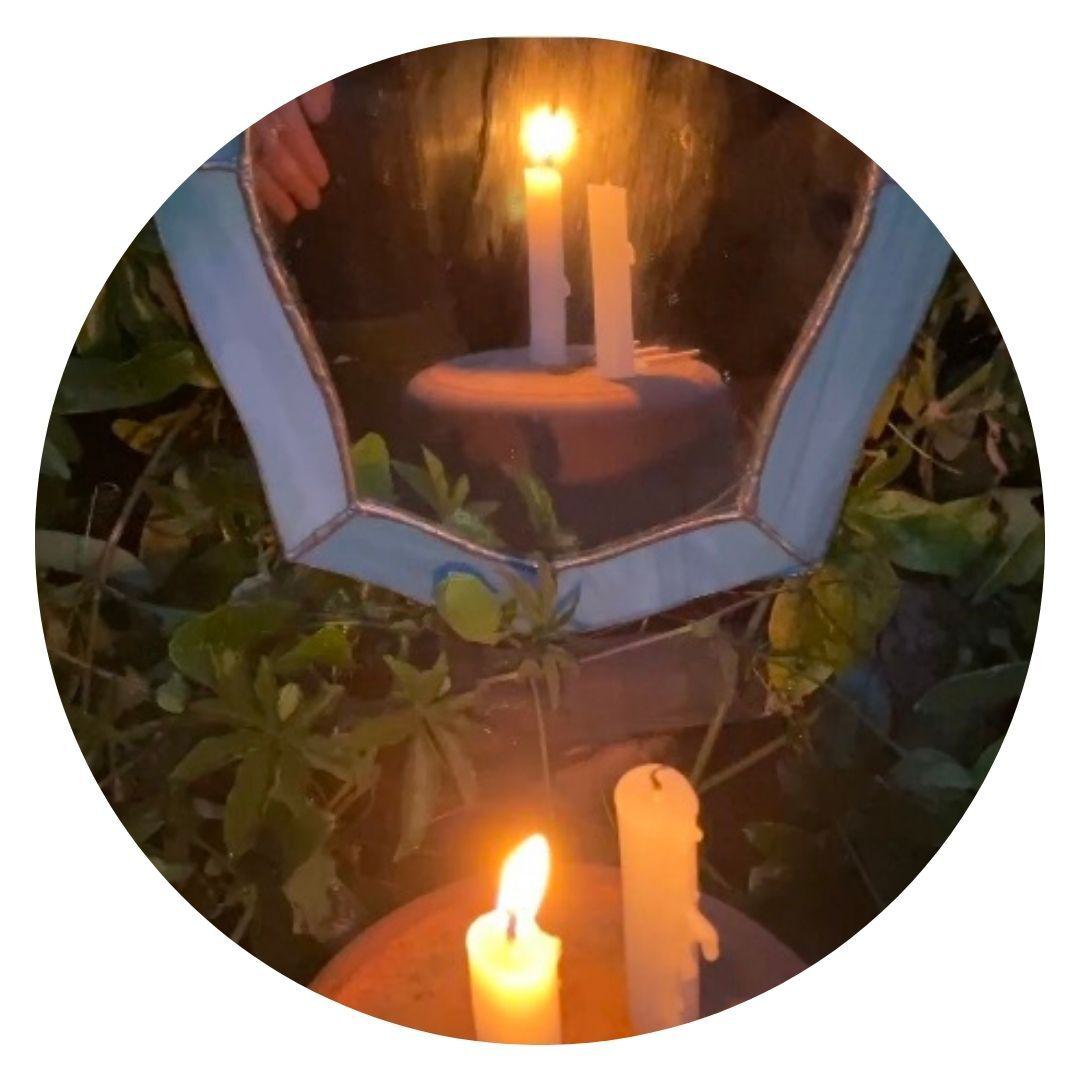
I scroll through social media, feel a failure because of the posts that say “Thrilled to say…’, ‘Been selected for…’ ‘Blahblahblah…’
I feel like giving up, putting my hood up, keeping my coat on to keep safe, climbing under the duvet to hide from the world.
Does anyone want to listen to me, hear what I say, be interested in my artworks?
Does anyone reach out to me and say ‘We’d like you to be part of this…’?
In my life, I’ve done a lot of reaching out to others but since covid, I seem to have lost sight of how to do that. Lost my ability to organise myself, let alone organise anyone else.
Is this a mental health issue? When I became so obsessed with being Super Woman, I lost sight of myself. That definitely was a scary mental unhealth.
Today I’m gradually climbing out of the hole I dug, millimetre by millimetre. The top of the hole is somewhere up there.
I can now step out and make a stand, albeit for other people’s causes. I can perform, film and edit to tell a story. It might involve non-linear time, backwards and forwards, out of sequence. But I’ve come to terms with time being a slippery socially-constructed phenomena. As performer, I’m always present, sometimes visible, my face rarely. Sometimes I’m the only audience.
Now here’s the thing… having spent a long time telling other people’s stories, I have just embarked on telling my own. Why? Because I saw an invitation to step into a safe space for difficult stories. I hesitated, asked lots of questions, then tiptoed in. To start with, I just listened and talked about other people’s stories (my familiar way of being). Then I opened my story door a tiny crack and peeped in to all the trauma stuffed down inside me.
Having opened the door, it’s all seeping out, gaining in momentum. This time, it’s graphic. I’ve started trying to spend half an hour a day working on it, even before I open my laptop, look at other’s stories, or get hooked into the social and environmental disasters of the current world.
I used to say I couldn’t be creative without an external trigger. Couldn’t just make art without a purpose. Then I gave myself permission to play each day, be creative. It has now turned into this externalising of my own trauma held internally for so many years. It’s taking on a life of its own and will be done no matter what happens.
So, I’m discovering that
- resilience means taking the time to listen to myself as well as to everyone else
- that my best self-care tip is finding my happy place for a few minutes every day
- and being there reminds me why I create—without it I would not exist, let alone flourish. I don’t need to be high profile, thrilled to be… I am and that is enough for today.
Sally Lemsford — visual storytelling and Tiny Acts
=====
HELEN LANE
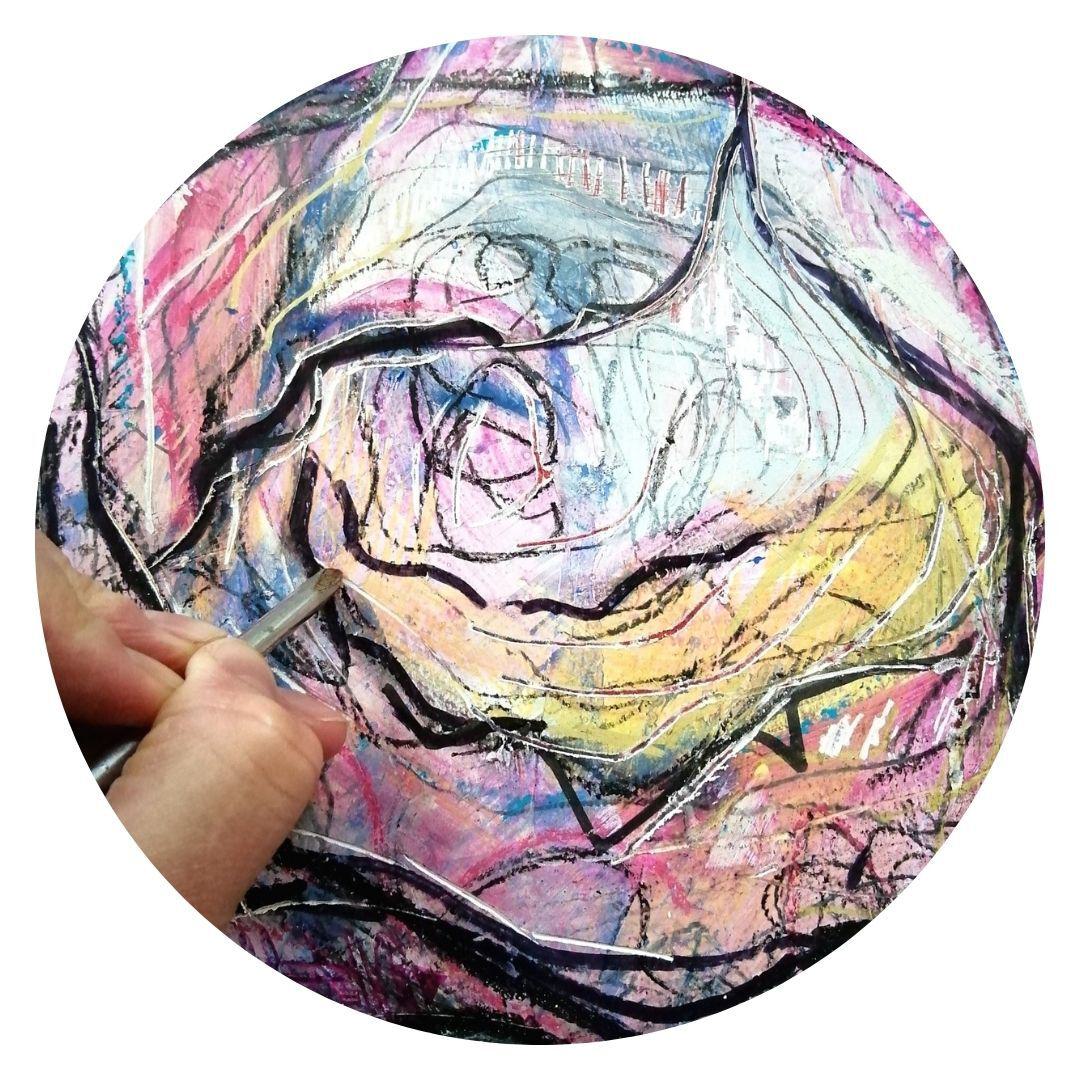
My definition of resilience is something that has evolved over the years.
In my 20s and 30s, I believed resilience meant enduring everything and anything that came my way, and disregarding any cost to me. I took a misguided sense of pride in withstanding any challenges that came my way - it felt like a badge of honor— ‘wow, look at my ability to keep going!’
No matter how much I was pushed mentally and emotionally, my unfaltering resilience felt like a sign of inner strength. But hindsight has taught me that this misguided sense of resilience can keep you stuck in unhealthy and unhappy situations…
As I move through my early 40s, I’ve come to learn that resilience is far more layered than I once thought. It’s not just about bouncing back, but about recognising your limits and prioritizing your well-being. Much like an elastic band, resilience involves the ability to stretch and adapt but always returning back to yourself. However, that “pinging back” ability depends on you being able to recognize when you’re being stretched too far. As even the strongest elastic band will snap if pushed beyond its capacity.
I’ve realized that true resilience comes from knowing when to ask for help and accepting that you don’t have to face everything alone. It’s about recognizing when you are approaching your capacity to cope mentally, emotionally, physically, socially and being able to say “This is too much,” or saying, “Stop, I need help’
Mental and emotional resilience are deeply intertwined with physical resilience. When we neglect our physical health, our mental and emotional capacity to handle life’s challenges often diminishes. Similarly, resilience cannot authentically exist without self-esteem and the ability to advocate for yourself. It requires us to recognize our worth and set boundaries that protect our energy and mental health.
For me, resilience has become a balance between strength and softness, persistence and self-compassion. It’s about honoring my needs, listening to my body and mind, and finding the courage to admit when I need support. Resilience includes knowing when to step back and recalibrate. It’s about saying, “No,” when I’m stretched too thin and embracing the power that comes from prioritizing my well-being.
This shift in perspective has allowed me to view resilience not as a single act of toughness or an unshakeable ‘grit’, but I see it as an ongoing process. I think resilience is strongest when you have a strong connection to yourself and as you tune into your intuition. It thrives when you have a feeling of community and a ‘village’ to support you and to stand alongside you. I now know that resilience isn’t about being invincible; it’s about being human…..it’s about stretching, adapting, but always returning to yourself - and with that you become stronger, wiser and with a greater capacity to cope with any challenges you may face.
Helen Lane an abstract mixed media artist with a passion for process art, texture and colour
=====
SARAH-JANE MASON
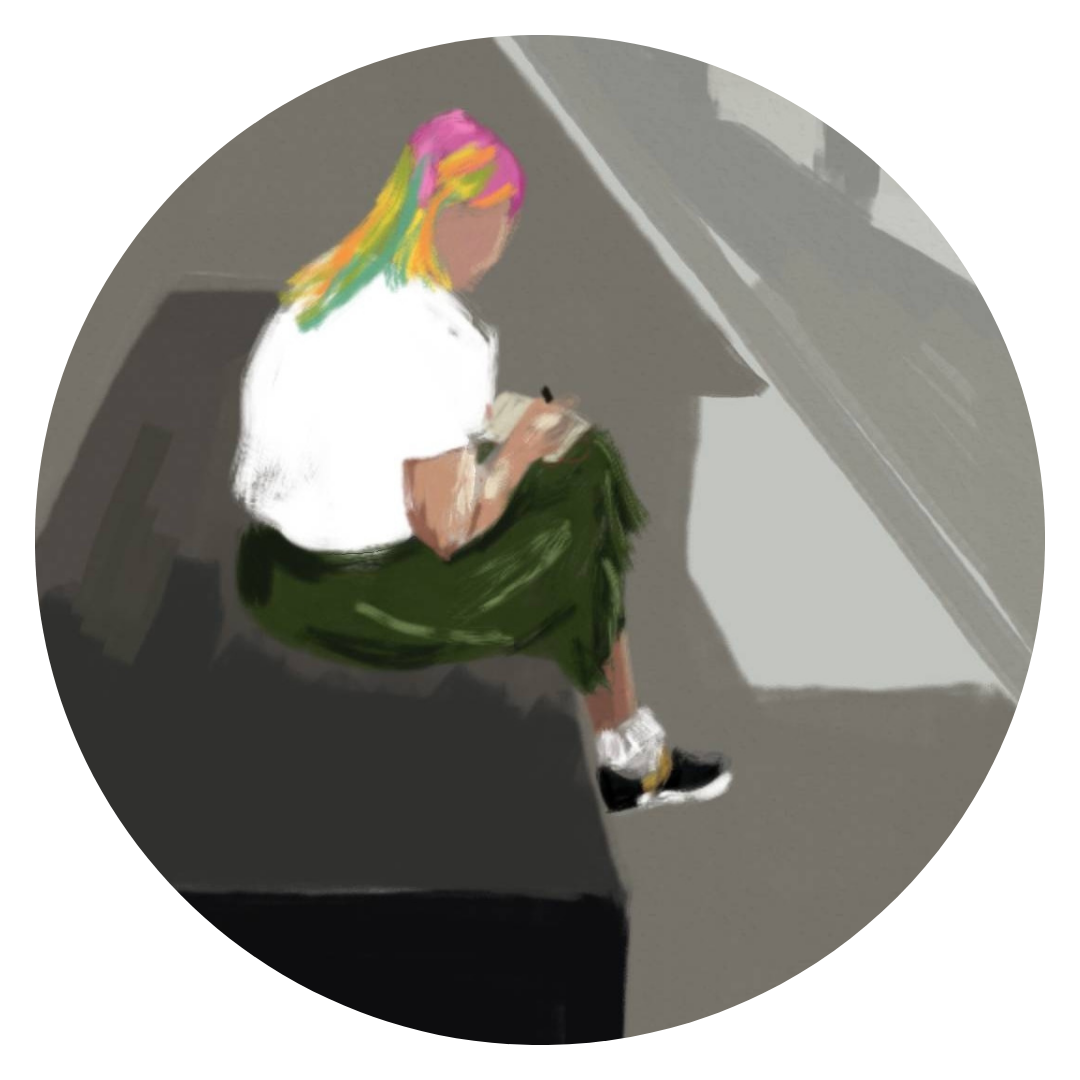
It is 2.14am, barely a week into the New Year, and insomnia has struck again. Racing thoughts. Pounding heart. Sweaty palms. Freezing soles, toes scrunched together to find warmth.
This is not uncommon for me; insomnia is just one of many symptoms caused by a disabling chronic illness. But this morning feels different. Instead of doom scrolling, I am writing—and thinking deeply—about my life as an artist. My existence as a female, chronically ill, disabled, middle-aged (scary), slightly adrift, creative.
There are so many intersections, that’s the thing. Acting like a dog with a bone feels necessary for surviving, let alone thriving. Grab hold and don’t let go—unless I need to rest of course. Then drop it like it’s a hot potato and take a nap like NOW NOW NOW! There’s a relentlessness to this existence that keeps me putting one foot in front of another to create the path forwards in my life. And I notice that this lived experience is often mirrored in my creative processes.
Because there’s tenacity in existing on society’s fringes; what I learn in one part of my life easily translates to another. Chasing a diagnosis resembles pursuing funding or a commission. It is daring to be here, taking up space, claiming what’s mine, demanding respect. It’s sticking my hand up, waving, shouting, "Look at me. I matter. My ideas matter." And perhaps most importantly, "Help me." Please, for the love of all that tastes good, help me.
It’s at that exact point where frustration threatens to blacken all daylight, when my pleas for support, once again, seem unnoticed. Something softens; as if the very air I breathe has become a gas again. Like the ground I stand on has shifted, yielded somehow, become pliable. And out of the deep, dark hole comes a wash of violet, scratchy marks, a string of ideas that tumble out one after the other. Each forms a smear of shoe rubber against rock, and I begin to heave myself up and out.
At first, it’s hard work. There are false starts. Many times when I feel like giving up. Times when I crumple and heave fat, wet tears. But somehow, I straighten up and try again. And again. And again. And suddenly, I’m in a rhythm. I’m on a roll. And I’m up, off, and out.
This is why I find myself here composing this text, writing, scribbling it out, starting over. Even on the second or third attempt, replacing words. Going over each segment multiple times; refining, clarifying, redefining until it rings true. This is my creative process: cyclical with the highest highs and lowest lows. But it’s the rebound that matters. That springing back over and over, with total faith that my capacity to withstand the lows is significant.
I can even dig out hidden gems from those depths and use them as footholds back towards the dizzying heights.
Sarah-Jane Mason is a creative educator, facilitator and practitioner specialising in mixed media approaches to uncomfortable conversations.
What keeps you going?
- What does resilience mean to YOU?
- Do you have any good self-care tips?
- What makes you keep creating?
Need Support?
If you feel that you’re in immediate danger of seriously harming yourself, Please:
- Call 999
- Go to your nearest Accident & Emergency (A&E) department.
If you would like to talk to someone who is trained to listen, these organisations are here for you:
- Samaritans: Call 116 123 (free, 24/7) or email jo@samaritans.org
www.samaritans.org
- Mind Infoline: Call 0300 123 3393 (weekdays 9am–6pm) or email info@mind.org.uk
www.mind.org.uk
- Shout: Free, 24/7 text service. Text Shout to 85258
www.giveusashout.org
If you're struggling and need ways to cope, Mind has resources to help:
- Urgent Coping Tools: www.mind.org.uk/need-urgent-help
Share this article
Helping Artists Keep Going
Axis is an artist-led charity supporting contemporary visual artists with resources, connection, and visibility.


